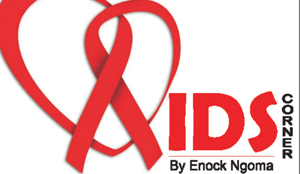 THIS week, I would like us to remind ourselves on the relationship between TB and HI/AIDS.
THIS week, I would like us to remind ourselves on the relationship between TB and HI/AIDS.
According to WebMD Medical Reference, Tuberculosis (TB) is a serious disease that spreads through the air. It is caused by a bacterium called Mycobacterium tuberculosis.
Tuberculosis usually affects the lungs. However, it can affect other parts of the body, such as the central nervous system.
About 10 to15 million Americans are infected with tuberculosis. For most people with healthy immune systems, this is not a problem. Nine out of 10 of them won’t develop active disease with symptoms.
The risk is great, however, for people who are HIV-positive. That’s because tuberculosis takes advantage of a weakened immune system, which is why it’s called an opportunistic infection.
Worldwide, tuberculosis is the leading cause of death for people infected with HIV (human immunodeficiency syndrome). If you are HIV-positive, you should be tested for tuberculosis. Prevention and treatment not only help control tuberculosis, but also help prevent greater damage to your immune system.
How You Can Get Tuberculosis With HIV
The bacteria that cause tuberculosis travel through the air, such as in a cough or sneeze.
But you are not likely to get the disease through a single exposure. And you can’t get it from sharing dishes or utensils, or through touching someone who has it.
You are more likely to get tuberculosis from constant exposure to an infected person, such as someone with whom you work or live.
You are likely to get tuberculosis in places with poor ventilation or crowded conditions. If you are HIV-positive, discuss with your doctor whether it is safe to continue working in places like:
– A hospital, clinic, or doctor’s office
– A nursing home
– A jail or prison
– A shelter for homeless people
Other TB tests you may need include:
A chest X-ray, which produces a picture of your lungs, TB smear test, where your doctor takes a sample of phlegm and examines it under a microscope for signs of bacteria and a sputum culture, which involves growing the bacteria to reveal signs of active tuberculosis.
If you test negative, you should be retested once a year. If you had a baby after you became HIV-positive, have your baby tested at nine to 12 months of age.
Treating Tuberculosis if You Have HIV
If you are infected with tuberculosis, get treated right away, whether or not you have active disease. Complete each of your treatments, exactly as your doctor tells you. Otherwise, the tuberculosis germs can become resistant and the drugs may stop working.
To treat active tuberculosis, you will take more than one drug for several months. This is a common combination of drugs:
Myambutol (ethambutol), Nydrazid (isoniazid), Tebrazid (pyrazinamide), Rifadin or Rimactane (rifampin), Nydrazid (isoniazid) (INH) and Pyridoxine (vitamin B6).
Here’s what to expect during and after TB treatment:
Drugs for HIV and drugs for TB can interact with each other. Your doctor will decide which combination of medications works best for you.
As long as your CD4 cell count isn’t too low, your doctor may recommend treating the tuberculosis before putting you on antiretroviral therapy.
You will likely need to stay away from others for a few weeks so you won’t spread the disease.
After about three weeks of treatment, you won’t be able to pass on the disease anymore. A health care provider can confirm this with three negative TB smear tests.
To be totally cured, keep taking your medications as your doctor tells you to. This will prevent you from becoming sick with tuberculosis again.
Preventing Tuberculosis
Drugs to prevent latent tuberculosis from becoming active are called prophylaxis. Before starting this preventive therapy, your doctor will first need to confirm that active disease is not present.
These are common medications used for prophylaxis:
Nydrazid (isoniazid) (INH) for 6-12 months.
Pyridoxine (vitamin B6) to prevent peripheral neuropathy, a side effect of INH.
Rifadin or Rimactane (rifampin), if isoniazid is not effective.
Comments : knoxngoma@gmail.com or call/text +260955883143






